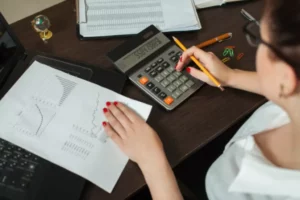Content

He is a CFA charterholder as well as holding FINRA Series 7, 55 & 63 licenses. He currently researches and teaches economic sociology and the social studies of finance at the Hebrew University in Jerusalem. Sign up to receive more well-researched small business articles and topics in your inbox, personalized for you. Our mission is to empower readers with the most factual and reliable financial information possible to help them make informed decisions for their individual needs.
How does declining balance method work?
The declining balance method is an accelerated depreciation system of recording larger depreciation expenses during the earlier years of an asset's useful life and recording smaller depreciation expenses during the asset's later years.
The best way to understand how it works is to use your own numbers and try building the schedule yourself. But as time goes by, the fixed asset may experience problems due to wear and tear, which would result in repairs and maintenance costs. That’s why depreciation expense is lower in the later years because of the fixed asset’s decreased efficiency and high maintenance cost. We can understand how the depreciation expense is calculated each year under the double-declining method from the below schedule. For example, last year, the actual depreciation expense as per the depreciation rate should have been $13,422 but kept at $12,108.86 to keep the asset at its estimated salvage value. So, the depreciation expense is calculated in the last year by deducting the salvage value from the opening book value.
What is the 150% declining balance depreciation?
The https://www.bookstime.com/articles/double-declining-balance-method of depreciation reports higher depreciation charges in earlier years than in later years. The higher depreciation in earlier years matches the fixed asset’s ability to perform at optimum efficiency, while lower depreciation in later years matches higher maintenance costs. However, computing the double declining depreciation is very systematic. It’s ideal to have accounting software that can calculate depreciation automatically. The double declining balance depreciation method is a form of accelerated depreciation that doubles the regular depreciation approach.
Every year you write off part of a depreciable asset using double declining balance, you subtract the amount you wrote off from the asset’s book value on your balance sheet. Starting off, your book value will be the cost of the asset—what you paid for the asset. Companies will typically keep two sets of books (two sets of financial statements) – one for tax filings, and one for investors. Companies can (and do) use different depreciation methods for each set of books. For investors, they want deprecation to be low (to show higher profits). There are various alternative methods that can be used for calculating a company’s annual depreciation expense.
The double declining balance formula
Because of this, it more accurately reflects the true value of an asset that loses value quickly. When you drive a brand new vehicle off the lot at the dealership, its value decreases considerably in the first few years. Toward the end of its useful life, the vehicle loses a smaller percentage of its value every year. (You can multiply it by 100 to see it as a percentage.) This is also called the straight line depreciation rate—the percentage of an asset you depreciate each year if you use the straight line method. Hence, our calculation of the depreciation expense in Year 5 – the final year of our fixed asset’s useful life – differs from the prior periods. The depreciation expense recorded under the double declining method is calculated by multiplying the accelerated rate, 36.0% by the beginning PP&E balance in each period.
- The journal entry will be a debit of $20,000 to Depreciation Expense and a credit of $20,000 to Accumulated Depreciation.
- At Finance Strategists, we partner with financial experts to ensure the accuracy of our financial content.
- In the second year, depreciation is calculated in a regular way by multiplying the remaining book value of $36,000 ($40,000 — $4,000) by 40%.
- The result is that the depreciation expenses are larger in beginning and then get smaller over time.
- Businesses must also consider that as the depreciation expenses of assets decline, their tax expenses will increase.
- For example, last year, the actual depreciation expense as per the depreciation rate should have been $13,422 but kept at $12,108.86 to keep the asset at its estimated salvage value.
- It is also useful when the intent is to recognize more expense now, thereby shifting profit recognition further into the future (which may be of use for deferring income taxes).
He spends most of his time researching and studying to give the best answer to everyone. Note that the double-declining multiplier yields a depreciation expense for only four years. Also, note that the expense in the fourth year is limited to the amount needed to reduce the book value to the $20,000 salvage value. This rate is applied to the asset’s remaining book value at the beginning of each year. Mary Girsch-Bock is the expert on accounting software and payroll software for The Ascent. If you’re using the wrong credit or debit card, it could be costing you serious money.
How to calculate depreciation using the double declining method
1- You can’t use double declining depreciation the full length of an asset’s useful life. Since it always charges a percentage on the base value, there will always be https://www.bookstime.com/ leftovers. If something unforeseen happens down the line—a slow year, a sudden increase in expenses—you may wish you’d stuck to good old straight line depreciation.
- If you’ve taken out a loan or a line of credit, that could mean paying off a larger chunk of the debt earlier—reducing the amount you pay interest on for each period.
- This formula works for each year you are depreciating an asset, except for the last year of an asset’s useful life.
- To create a depreciation schedule, plot out the depreciation amount each year for the entire recovery period of an asset.

